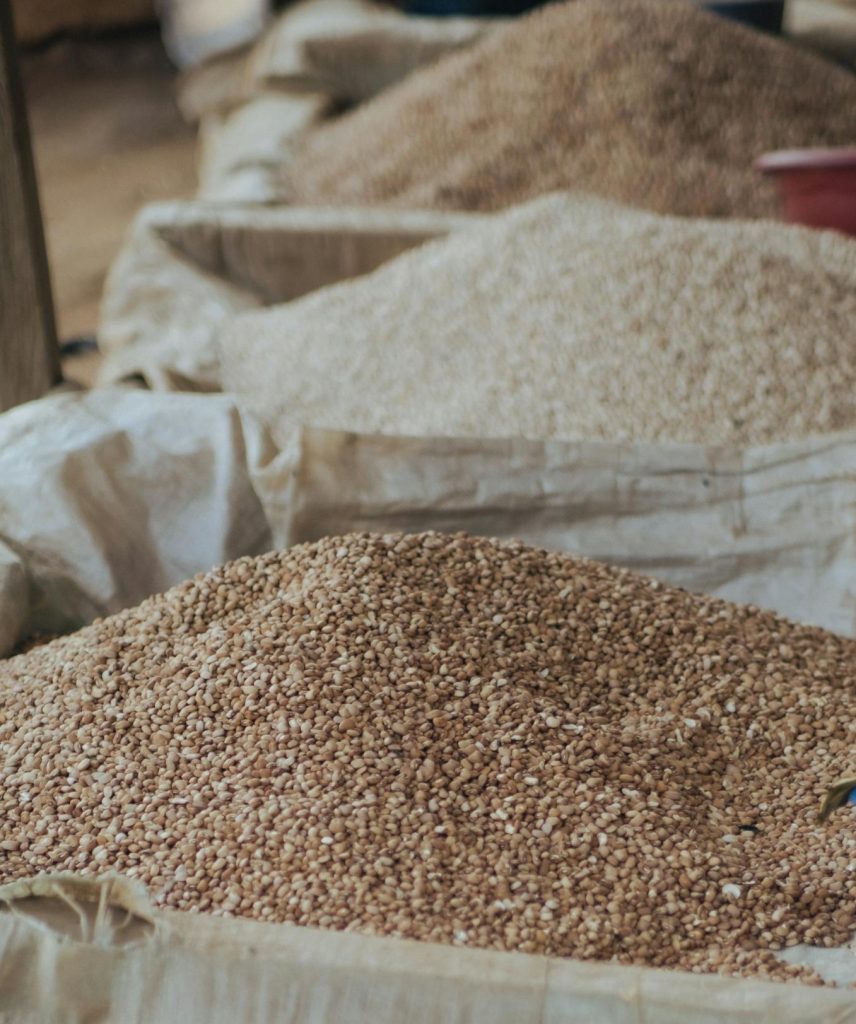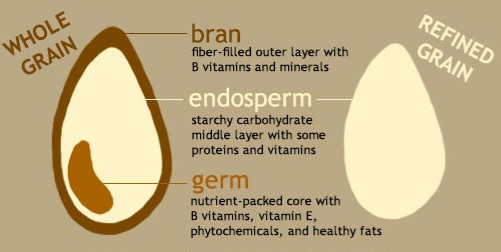Why Fresh-Milled Wheat?
Now I know that picking up a loaf of bread at the store is both easy and relatively inexpensive. But have you ever stopped to take a look at the ingredients? If you’re like me, I had looked, and then chosen to just look the other way because making bread felt overwhelming and I wasn’t convinced that, just because I made it myself out of flour-off-the-shelf, that it was really any better.
Well, I think I was both right and wrong. Is making your own bread with regular all-purpose flour better than picking up a loaf of WonderBread? Probably. Is regular, commercially milled all-purpose flour really all that great? No, its really not.
But the good news is: There is a relatively easy way to make traditional bread the way it was made 100 years ago with all the ingredient-control you want, while keeping the benefits of the whole-food wheat plant

Why bother, exactly?
You’ve got to consider the difference between fresh milled flour versus enriched, bleached commercial white flour from the grocery store? There is a big difference and its impact on human health after its commercial availability in the 1920s has been severe.
What is enriched? What is bleached? And what is white flour, exactly? Why is it associated with negative health impacts?
A wheat berry is the whole food, edible seed of the wheat plant and it contains endosperm, germ, and bran. All three of these components contain important nutritional benefits to the body.

The Bran and Germ: Together these two components provide the majority of fiber, protein, vitamins, and minerals including: Thiamine, Riboflavin, Niacin, zinc, Copper, Selenium, Vitamin B6, Vitamin E, Cobalt, Pantothenic acid, Potassium, Iron, Manganese, Molybdenum, Chromium, Phytic acid, and Phosphorus. Also, not only is wheat bran nutrient dense, it’s also relatively low calorie. Half a cup (29 grams) has only 63 calories, which is minuscule considering all the nutrients it packs. They also contain non-digestible fibers aka “prebiotics” that feed the probiotics in your gut. Additionally it’s been linked with fighting cancer because it binds to estrogen, reducing circulating estrogen in the body, thus reducing breast cancer risk.
Endosperm: the “white” part. It’s mostly starch. It also contains some iron and protein.
White flour is the ground wheat berry that has the bran and germ sifted out of the flour and is left with just the endosperm.

White flour is soft and supple. It makes airy, light white bread products that tastes delicate and consistent. The germ and bran are vitamin and mineral rich, but harder and courser. These parts are milled with the endosperm and make-up a percentage of whole wheat flour. They contain oils that will oxidize once milled and reduce the shelf-life of the wheat and give it a denser, less preferred texture.
In response, millers began sifting out the bran and germ and subsequently selling it to farmers to feed to cattle and other livestock. Thus, creating an entire new sub-industry that became even more profitable than selling simple, milled whole wheat! So between being easier and fashionable to sell to consumers, providing more shelf stability, and being more lucrative as a whole, white flour was born and became a quickly booming industry.
However, during this time of the 1920s, several vitamin and mineral deficiencies began cropping up and plaguing society including Beriberi (lack of Thiamin), Anemia (lack of iron), and Pellagra (lack of Niacin)
The public health officials of the time linked these diseases to the white flour that had been stripped of its germ and bran; thus its nutrition, and asked the millers to return the bran and germ to the flour. Unsurprisingly, though, the millers refused and instead added 5 main vitamins (Niacin, Thiamin, Riboflavin, Folic Acid, and Iron) and minerals back into the white flour and labeled it as “enriched” to appease public health.
This did end the Pellagra and Beriberi epidemic, but it also secured the use of nutrionally-depleted white flour forever into the world’s diet. On top of that, manufacturers began processing the flour with chlorine to further break it down and bleach the yellow xanthophyll to ensure a white, consistent, physical appearance and taste.
From that time period and on, cancer, heart disease, constipation, obesity, and diabetes have become the new epidemic with no end in sight.
So what does white flour have to do with heart disease, obesity, diabetes and constipation?
I can’t say that white flour alone is responsible for the decline of American health. I whole-heartedly believe it’s a combination of many factors including over-indulgence of fried and other caloric-dense foods, overabundance of sugar, lack of exercise, reduced fruit and vegetable consumption, reliance on processed foods, unhealthy seed oils, swapping water consumption for sugary drinks…the lost goes on and on.
But a main staple of nearly EVERY SINGLE MEAL eaten by Americans today is some form of white flour product. That’s a pretty high percentage of the daily food intake. Of course, then, it would have a high impact on diet and health.
More specifically though, what does white flour do to our body and how is it linked to these chronic diseases?
-Reduces the total amount of nutrients we eat bc it makes us feel full and we don’t eat other options (namely fruits and vegetables)
-The endosperm is starch that is processed quickly in the body and converted to glucose, making insulin spike and thus contributing to diabetes. The fiber in the bran and germ slow the digestion process in the stomach and reduce the blood sugar spike.
-It is simply high in calories and low in nutrients, thus contributing to obesity
-White bread products are filled with preservatives, sugar, often added flavors, and dough conditioners
-White flour lacks fiber. The endosperm is nearly all starch. The Bran and germ, however, are nearly all fiber.
-Bran and germ contain insoluble fiber and soluble fiber. Insoluble fiber is beneficial for gut health. It is considered a “prebiotic” which is the food for “probiotics” aka the good bacteria in our gut. You can take all the probiotic capsules you’d like, but without sufficient food for your gut bacteria, it will not thrive. You need prebiotics for healthy gut flora.
-Bran and Germ help lower bad cholesterol thus reducing your chances of heart attacks and strokes. Like previously mentioned, the endosperm is nearly all starch, but the bran and germ are nearly all fiber. Fiber lowers cholesterol by binding to it in the small intestine. Once inside the small intestine, the fiber attaches to the cholesterol particles, preventing them from entering your bloodstream and traveling to other parts of the body.
All in all, there are many problems in the Standard American Diet, but one that’s glaringly obvious is the commercial use of nutrionally-depleted and bleached white flour.
So, how do we purchase and mill our own wheat berries? Learn Here.
